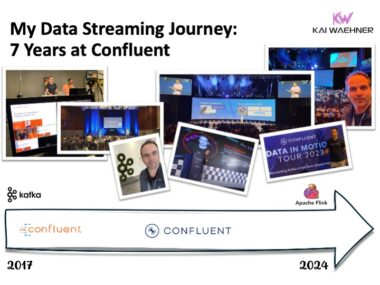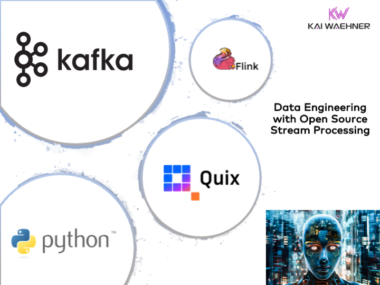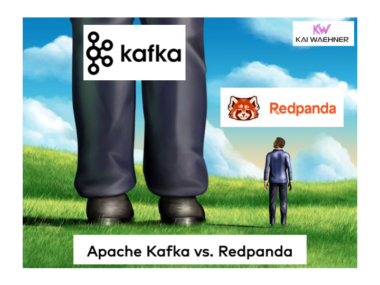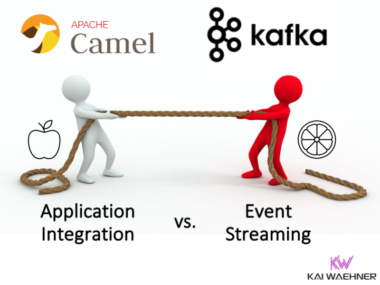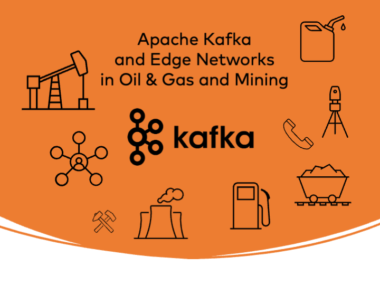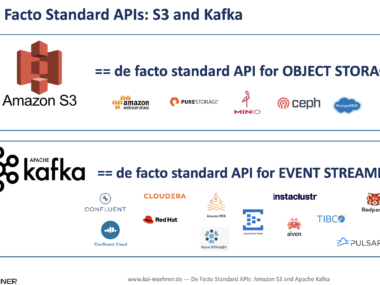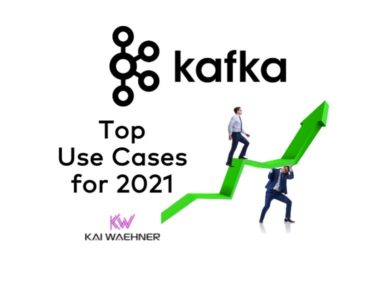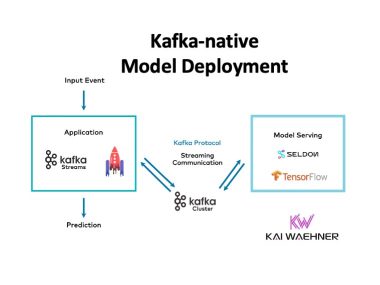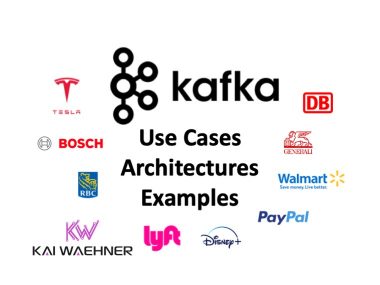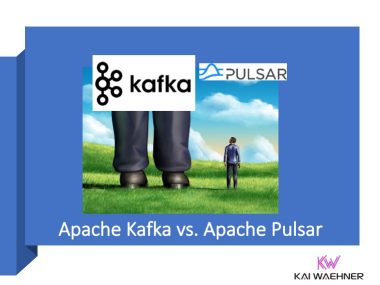My Data Streaming Journey with Kafka & Flink: 7 Years at Confluent
Time flies… I joined Confluent seven years ago when Apache Kafka was mainly used by a few tech giants and the company had ~100 employees. This blog post explores my data streaming journey, including Kafka becoming a de facto standard for over 100,000 organizations, Confluent doing an IPO on the NASDAQ stock exchange, 5000+ customers adopting a data streaming platform, and emerging new design approaches and technologies like data mesh, GenAI, and Apache Flink. I look at the past, present and future of my personal data streaming journey. Both, from the evolution of technology trends and the journey as a Confluent employee that started in a Silicon Valley startup and is now part of a global software and cloud company.

